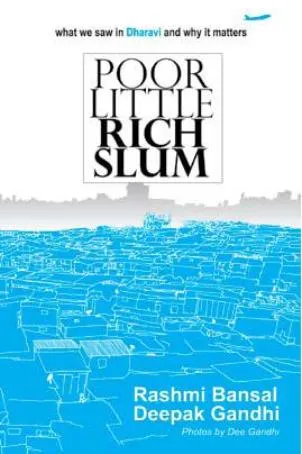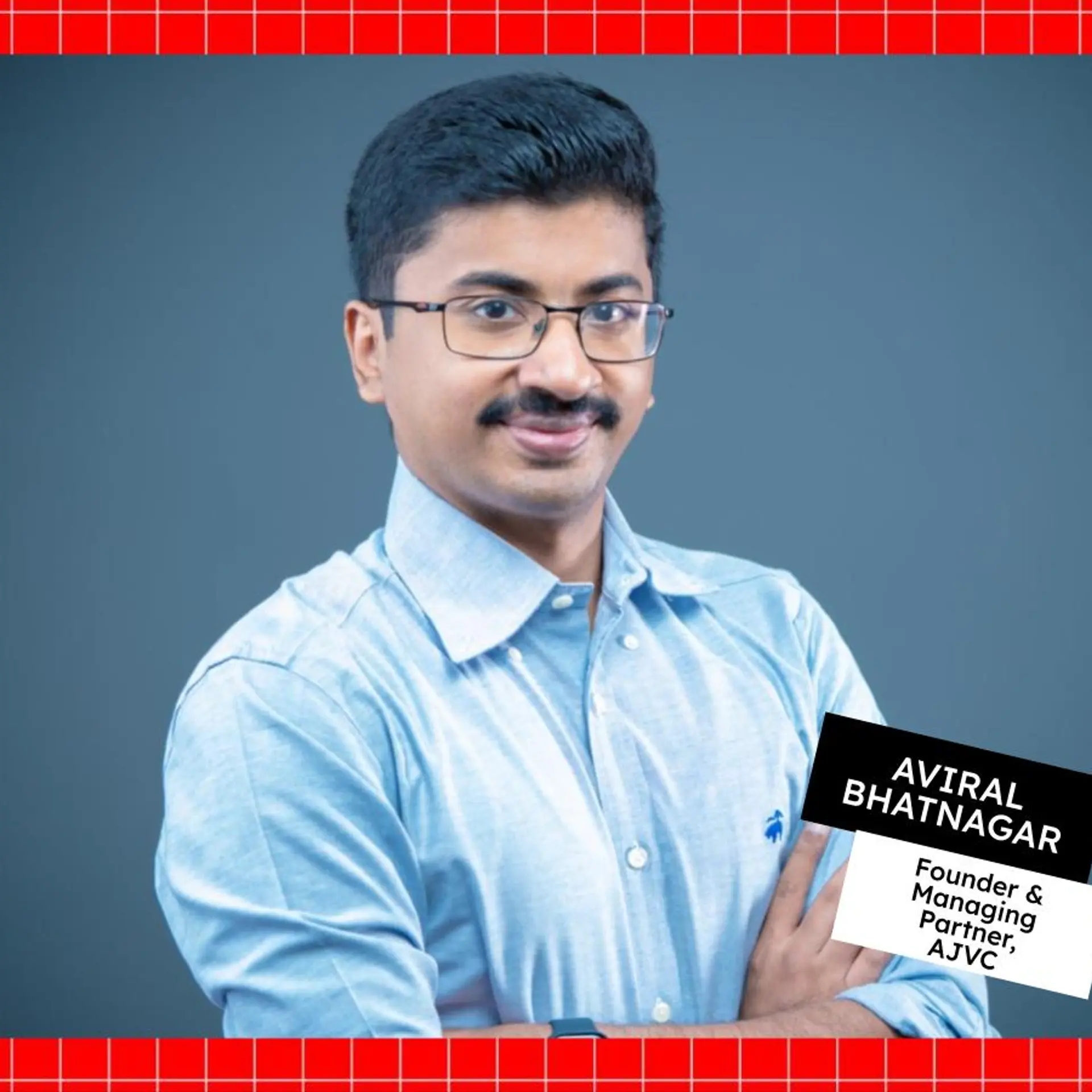[Book Review] Poor Little Rich Slum: What We Saw in Dharavi, and Why it Matters

URL: Westland Books
2012 Westland, India
192 pages; 28 chapters
This is the fourth book by writer, entrepreneur and youth expert Rashmi Bansal, written in her trademark style with Hinglish sentences liberally sprinkled in, and each chapter ending with witty quotes. Her earlier books have focused on business and social entrepreneurship by MBA and non-MBA students.
Co-authored with Deepak Gandhi and with insightful photographs by Dee Gandhi, the layout of this new book is unusual – though the font size could have been larger, and some of the Hindi quotes translated to reach a wider audience.
The book makes for a provocative and inspiring read for all those interested in development studies, entrepreneurship, urban planning, social enterprise, activism and policy issues – indeed, for all citizens concerned about present-day India and the human face of its future.
The 28 chapters cover four broad sets of issues: descriptions of what Dharavi means to different people, the entrepreneurial drive in the slums, the NGOs and activists working for change, and the future development of the one of the world’s largest slums. The descriptions are brief but not superficial, and the direct quotes from the slum dwellers reveal their strong human aspirations and drive.
Dharavi continues to fascinate social scientists from India and around the world. “The outsider is blind to the drudgery of Dharavi,” the authors begin, describing the tough living conditions. The ‘unfairness’ of it all is hard-hitting, but the authors then dig deeper and deeper into the places, people, activities and aspirations.
Dharavi represents a silent revolution of energy and enterprise; it is an incubator, a factory of dreams; it is a wonder of the urban jungle. “There are slums of despair, and there are slums of hope. Agents of hope are everywhere in Dharavi, planting seeds of change,” according to the authors.
The authors trace the growth of some of the first occupational communities in Dharavi, such as potters from Gujarat, tanners from Tamil Nadu and UP, and shoemakers from other parts of Maharashtra. Today, upto 80% of Mumbai’s dry waste lands up in Dharavi for recycling, according to Vinod Shetty, director, ACORN Foundation.
I have briefly profiled the business and social entrepreneurs as well as activists and organisations below; the full chapters make for a much more interesting read of course:
Mushtaq Syed grew up in Dharavi, got into the leather business, and now runs INMA Enterprises, which exports shoes to the US.
Jameel Shah came to Dharavi from Bihar as a boy, and now makes dancing shoes for Bollywood stars; he has his own Facebook page also.
Fahim Vora and Tauseef Siddiqui grew up in Dharavi, went to an English medium school, and now run “Be the Local”, a travel firm which offers slum tours of Dharavi.
Mustaqeem Bhai came to Bombay from UP, slept on footpaths, learned sowing, and now runs a factory with 400 tailors.
Rani Nadar got an SBI micro-finance loan and now runs a tailoring shop, training and employing dozens of women.
Panju Swamy came from Tamil Nadu as a boy, and now runs the Ayyappan Idli Stall, making 20,000 idlis a day in 10ft X 10ft huts.
Praveen founded the Gurudutt Gymnasium, which has produced award-winning bodybuilders from Dharavi, and some students who now work at Gold’s Gym.
Soaib Grewal graduated from the Rhode Island School of Design, and runs Waterwalla in Dharavi, a social enterprise for clean-water technologies in urban slums.
Srini Swaminathan, a BITS Pilani engineer, now teaches in the slum as part of Teach for India; he has devised a ‘moving blackboard’ – an apron he wears, on which students can write.
Anita Patil-Deshmukh is with Pukar (Partners for Urban Knowledge and Research), which trains and involves slum dwellers as researchers in social science projects, such as analyzing the impact of globalization on slums.
Ramji Raghavan quit a high-flying career as a banker in London to start Agastya, a non-profit organisation to make science ‘fun’ and accessible, and thus build experiential learning and problem-solving skills; it also organizes science fairs hosted in Dharavi.
Walter Fischer learnt acupuncture in Switzerland and China, and now runs the Barefoot Acupuncturists Clinic in Dharavi to treat victims of chronic pain; he wants to write a handbook of ‘humanitarian acupuncture.’
Vinod Shetty coordinates the activities of ACORN (Association of Community Organisations for Reform Now), and organises activities for ragpickers (‘green collar workers’), including “Dharavi Rocks,” a music project with the BlueFrog club.
Jalindar Adsule, a resident of Dharavi, has a degree in social work, teaches at the Nirmala Niketan College of Social Work, and has been active with NGOs such as PROUD (People’s Responsible Organisation of United Dharavi).
Hanifabi works for SNEHA (Society for Nutrition, Education and Health Action), which also advises women about their rights in cases of abuse.
Duru Shah’s programme ‘Growing Up’ has teamed up with UNESCO to launch the Kishori project to teach vocational skills to girls and organise cultural programmes.
Carl Avari and Zubin Pastakia set up the Sri Sri Ravishanka Vidya Mandir School, which now has 350 children in two shifts; it offers health checkups and meditation, and teaches students how to cope with neighbourhood problems of alcohol and violence.
Jockin Arputham was a street boy who cleaned toilets in Bombay, became an activist, founded the National Slum Dwellers Association, travelled around the world, and joined the Society for the Promotion of Area Resource Centres; he is now a winner of the Padma Shri award.
The concluding chapters address the future of Dharavi, and the competing forces at work. Some communities want participatory self-development, others from the outside are pushing the Dharavi Redevelopment Plan. The Dharavi Bachao Andolan and other community rights organisations call for transparency, on-the-ground surveys, and decision making involving local communities – and not just glitzy brochures of high-rise buildings, involving corrupt contractors getting shady deals.
An approach based on patterns of local communities and entrepreneurship and not just abstract sectors is needed, according to architect Aneeruddha Paul. Re-design of cities should be to do good, not just to look good.
“Dharavi is no paradise soon to be lost. But to those who reign there, it is a hell worth fighting for,” the authors conclude. It would be fitting to end the review by highlighting some of the powerful quotes in the book:
“A child who grows up in Dharavi may be poor but does not feel inferior.” - activist Raju Konde
“Politicians promise many things but forget after elections. So we have to be self-sufficient.” – Dilip Gadekar, Ekvira Mitra Mandal
“Education has opened our minds like a parachute.” - Mushtaq Syed, INMA Enterprises
“People here are not beggars, they are hard-working and self-sufficient. There is something to be learnt from us.” - Fahim Vora and Tauseef Siddiqui, Dharavi
Author profiles:
Rashmi Bansal is the author of Stay Hungry Stay Foolish, Connect the Dots and I Have a Dream, which have been translated into ten languages. Deepak Gandhi is a management consultant, speaker and teacher in the social sector. He has worked with NDDB, Tata Steel and UNDP. Dee Gandhi is self-taught freelance photographer.
[Follow YourStory's research director Madanmohan Rao on Twitter at @madanrao]


![[Book Review] Poor Little Rich Slum: What We Saw in Dharavi, and Why it Matters](https://images.yourstory.com/cs/wordpress/2012/11/poor-little-rich-slum-display.jpg?mode=crop&crop=faces&ar=16%3A9&format=auto&w=1920&q=75)




